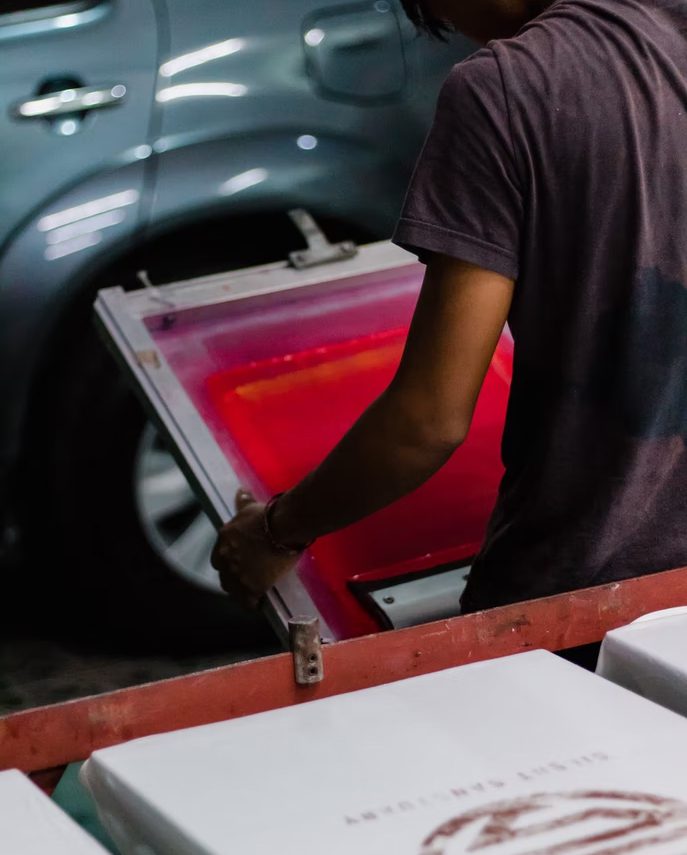Screen printing is one of the most popular forms of printmaking. It is also a medium that can be used to create large-scale prints that are affordable, durable, and beautiful. In this article, we will discuss some of the things you should know about screen printing before you get started.
We’ll talk about how it works, why you should use it, and answer some of the most common questions about the process.
What is screen printing?
Using screen printing, you can make a variety of items. It is a technique that uses advanced materials to create crisp, durable designs.
Screen printing was first developed in China around 2,000 years ago. It soon became popular in Europe and America. It has since been used in a variety of industries.
Originally, screen printing was a hand-crafted art. It became more mechanized during the 20th century. Screen printing has also been called serigraphy. Serigraphy is a form of art where the screen is used to print designs onto fabrics.
Screen printing can be done on paper, plastic, and fabric. Depending on the material you choose, you may need to use a special coating to make the ink resistant to moisture, chemicals, and scratches.
There are six main types of screen printing. Each type provides a different result.
The first step is to create a design. You can use Adobe Illustrator or Corel Draw to create your artwork.
Why is screen printing used?
Throughout history, screen printing has been used in a variety of ways. It is a type of printing method which involves stenciling a design onto a surface, usually fabric.
The most common type of screen printing technique uses a special light-reactive emulsion. This emulsion allows for the creation of custom stencils, similar to those used for photography. Unlike traditional printing, the ink in screen printing is thicker and durable. It also allows for more vibrant colors. This makes screen printing popular for custom designs, such as logos, and for printing pictures on a variety of different surfaces, such as glass and metal.
The first step in the screen printing process involves printing a design onto a light-sensitive film. This is then transferred to a fine mesh screen. Traditionally, the screen is made of silk thread, but polyester fabrics are also commonly used. This process requires a complicated setup, and can be time-consuming.
The second step in the process involves using a squeegee to push ink through the screen. The squeegee then transfers the stenciled design onto the product.
The Screen Printing Process
Whether you are a beginner or a pro, this guide will walk you through the screen printing process step by step. Screen printing is a process whereby a design is transferred onto a substrate using a stencil and screen.
- Typically, the design is printed on a transparent acetate film. This is used to make the stencil.
- A screen is then created by attaching a layer of a light-reactive emulsion to a mesh screen.
- The screen is then lowered to a printing board.
- Ink is then spread across the screen’s length using a squeegee.
- The squeegee helps to push the ink through the mesh and out of the open areas of the stencil.
This process is repeated for multiple items.
If you want to create a multi-colored design, you will need to make several stencils. You will also need to prepare a screen with the right tension. Using the right tension will ensure that your stencils will be smooth.
Will Screen Printing Ink Wash Out of Clothes?
Often, customers ask if screen printing ink will wash out of shirts. The answer depends on the type of ink used. Water based ink is less likely to wash out than plastisol.
Plastisol ink is a plastic polymer that will stay on the shirt fiber and will not soak into the shirt like water based ink. It is also much more durable than water based ink. It will last about a hundred washes.
Water based ink is thinner and softer to the touch, but it will not chip or crack like plastisol ink. It also won’t clog the mesh like plastisol ink will.
Water based inks are great for printing on lighter garments. However, they aren’t as good on darker garments. They will not show the same vibrant color on these garments as plastisol ink will.
The other big disadvantage of water based inks is that they can ruin your screens. You must use dip tanks to remove the emulsion and the ink from the screens.

